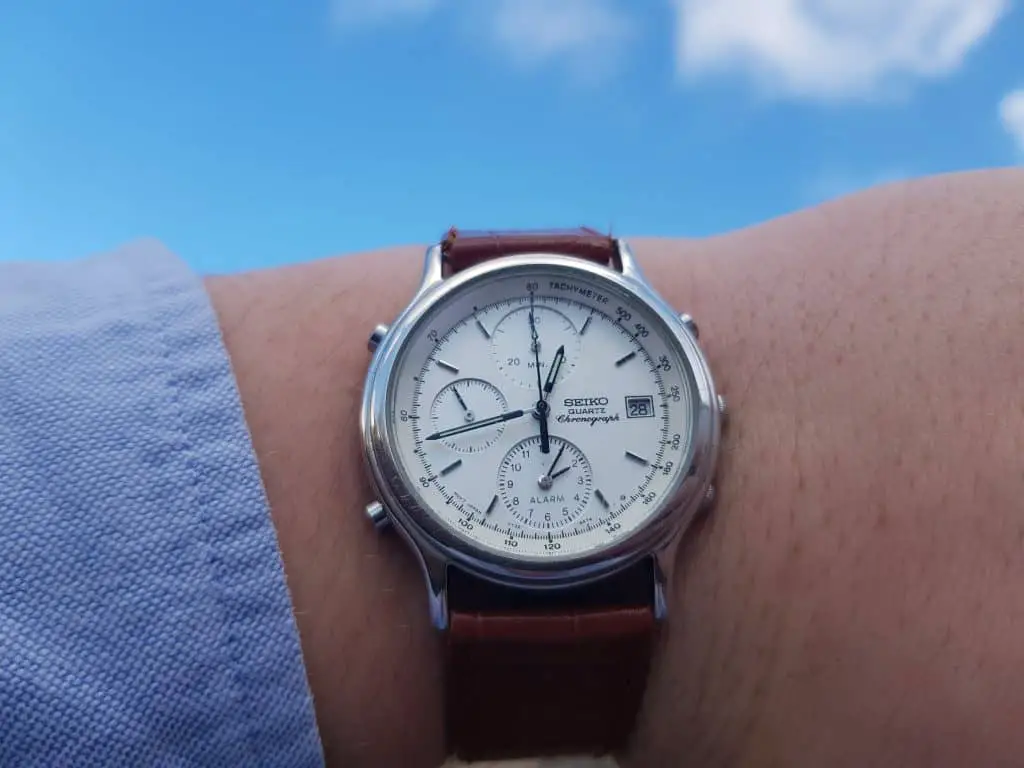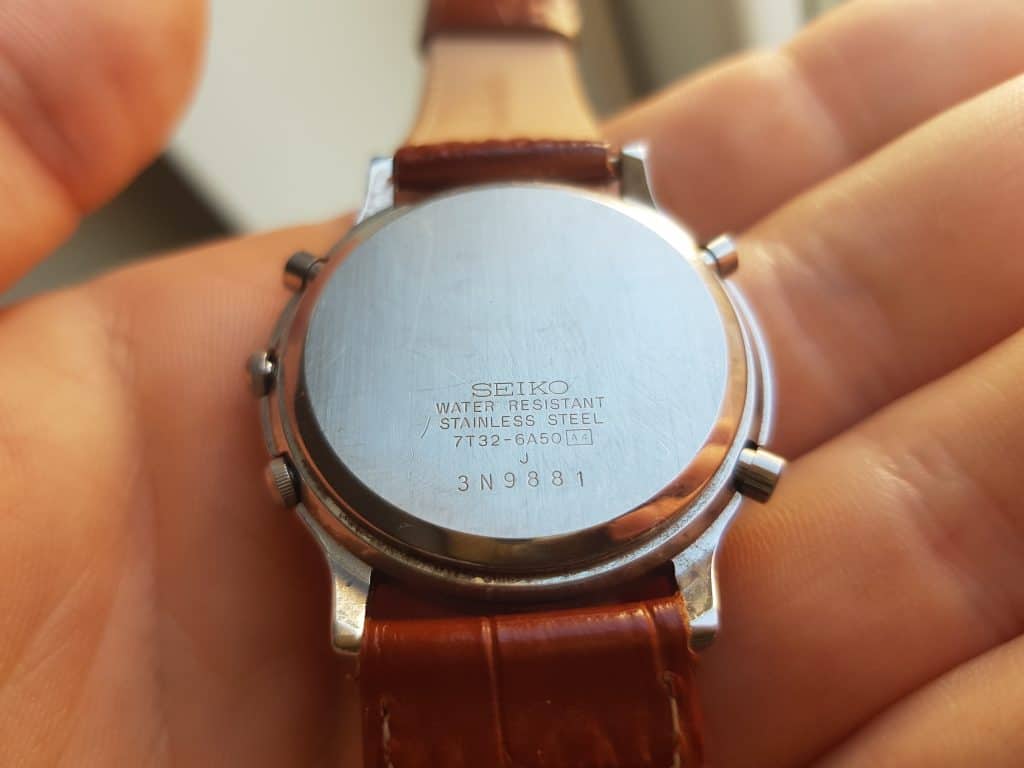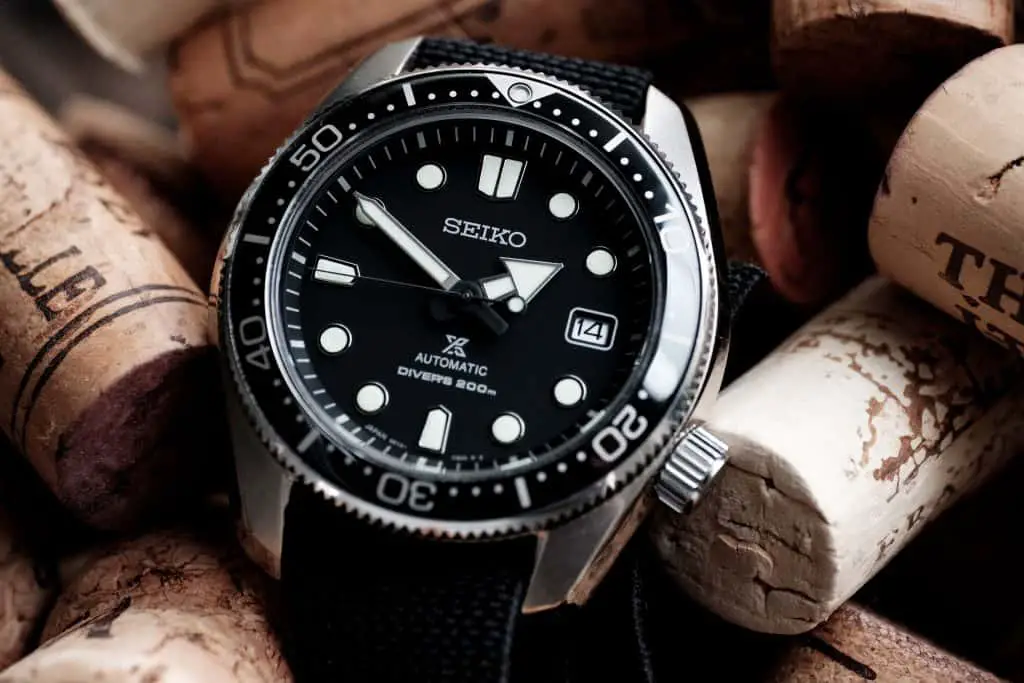If you have a Seiko watch, you may have noticed some seemingly random numbers on the case back and wondered if they represented anything. These numbers are actually serial numbers, and they do have some meaning behind them.
The serial numbers on Seiko watches show the month and year of manufacture. There are six digits in a Seiko serial number; the first digit indicates the year the watch was made, and the second shows the month. The final four digits make up the manufacturing number.
In this article, I’ll discuss what a Seiko watch serial number means in greater detail. I’ll also explain how to read serial numbers and what the other numbers on the case back mean.

Table of Contents
What Is the Seiko Serial Number?
The Seiko serial number is the six-digit number on the case back of every Seiko watch. It is the longest number on the case back, with the first two numbers indicating the year and month of manufacture. Serial numbers generally work the same on both Seiko and Grand Seiko watches.
Let’s discuss what each number represents in a bit more detail below:
- First number. This number indicates the year the watch was made. It displays the last number of the year. So, if your Seiko watch were made in 2009, the first digit would be 9. If it were made in 2022, the first digit would be 2. It can be challenging to tell what specific year your Seiko watch was made by only reading this first digit; a number 2 could mean any year that ends with 2, for example, 2022, 2012, or 2002.
- Second number. The second number indicates the month in which the watch was made. The numbers 1-9 represent January-September. O, N, and D represent October, November, and December. So, if your watch were made in July, the second digit would be 7. If it were made in November, it would be N.
- Last four digits. The last four digits indicate the manufacture number of the watch. Generally, these digits indicate your watch’s production number in that model. For example, if the last four digits were 3478, this could mean that your watch was the 3478th watch of that specific model that was made.
To help find out the specific decade your watch was made, you’ll also need to check the movement number, which is four digits; I’ll discuss this later on.

So, let’s say your watch was manufactured in November 1993 and was the 9881st one made in that specific model. In this case, the serial number on the watch should read 3N9881.
It’s important to note that most Seiko watches have three numbers in total. They are:
- The serial number. As mentioned earlier this has six digits and is the longest number on the watch’s case back.
- The case code. A four-digit number.
- The movement number (or caliber number). This one is also a four-digit number.
The case code and movement numbers are separated with a hyphen to make one total number, whereas the serial number is usually on its own.
Identify a Fake Seiko Watch by Examining the Numbers
If you’re ever concerned that your Seiko watch is fake, beyond examining your watch for scratches or improper design, you can check the numbers on the case back to determine its authenticity. Unfortunately, your watch is likely fake if there are:
- More than six digits in the serial number.
- More than four digits in the caliber number.
- More than four digits in the case design number.
- Some digits that don’t make sense in the series (i.e., a letter where there can only be a number).
Since the first digit of a Seiko serial number must be a number, you’ll know it’s fake if it begins with a letter instead. Similarly, if the second digit is 0, this would also mean it’s a fake Seiko watch. (Since the second digit represents the month the watch was made, the number 0 clearly wouldn’t make any sense!)
How To Determine the Specific Year a Seiko Watch Was Made
One of the easiest ways to find out what year a Seiko watch was made is to check the movement number. This is a four-digit number on the case back. Most Seiko movement models don’t last more than a few years, so this could narrow down the decade or year in which the watch was made.
Once you find out what movement the number represents, you can check the serial number. The first digit will represent the last digit of the year it was made.
So, let’s say you find out that the movement number on your Seiko watch represents a movement that was used between 1988 and 2001. Additionally, the first digit of the serial number is 3; this would mean that your watch was made in 1993, as is the case with my Seiko watch.
If you’re still struggling to understand how to read these different numbers, or if you’re still trying to figure out which one is which, you should look at the video below. It explains precisely where each number is located (skip to 2:50 if you want to go directly to the explanation):
Check What Years the Model Was in Production
Another way to determine what year your Seiko watch was made is to research the years in which that specific model was in production. For example, the Seiko Monster watches were in production from 2000 until 2012.
So, let’s say you have a Seiko Monster watch. If the first digit of the serial number is 0, the watch was either made in 2000 or 2010.
If the first digit of the serial number is 6, the year of manufacture would have to be 2006.
By checking the model of your watch, it can help you determine the year your watch was manufactured.
Research Various Websites
There are some websites where you can input the serial, case design, and caliber numbers. The site will try to find out what year or decade your watch was made from the information you give. If you want to try this method, you could try a website like Retro Seiko UK’s Seiko serial number decoder.
However, it’s hard to know whether these websites are always accurate or not, so keep that in mind if you try this method.
What Is the Seiko Caliber Number?
The Seiko caliber number (movement number) is a four-digit number on the case back of all Seiko and Grand Seiko watches. It indicates the movement model of the watch, which can help determine the decade and year the watch was manufactured.
The caliber number should not be confused with the serial number. The caliber number is always next to the case design number, with a hyphen between the two of them.
In Grand Seiko watches, which are more high-end than regular Seiko watches, it’s common for the caliber number to begin with 9S.
The 9S is a mechanical movement made in-house by Seiko, so if you see a watch with a number that begins with 9S, you’ll know which movement it is.

By visiting the Grand Seiko website, you can see all the different mechanical movements and their specific four-digit numbers; this can help you identify the movement of your Grand Seiko watch.
For regular Seiko watches, the caliber number works the same. Some common calibers for traditional Seiko watches include 6R15 and 4R35. One of the most popular Seiko watches, the Presage Cocktail Time ‘Houjou,’ uses the caliber 4R35. So, if you have this watch, you should see this number on the back of your watch.
Since Seiko updates movements every so often, knowing the movement model can help you determine when your watch was made. For example, a movement model that was discontinued ten years ago would indicate that your watch is at least ten years old.
Do All Seiko Watches Have Unique Serial Numbers?
All Seiko watches have unique serial numbers, which help identify when the watches were made and their manufacture numbers. Additionally, when the four-digit caliber code and four-digit case design code are put together, this number is also unique to each watch.
Although the serial numbers are unique, the first two digits can often match the first two digits of other Seiko serial numbers. This is because these digits simply represent the year and month of manufacture, which can, of course, match that of other watches.
Conclusion
The serial number on a Seiko watch is a unique six-digit number representing the year and month the watch was manufactured. It also shows the manufacture number of the watch.
Here are some other essential things to take away from this article:
- The first digit represents the year the watch was made.
- The second digit represents the month the watch was made.
- The last four represent the production number.
- There is also a four-digit case code and a four-digit caliber code.
- These represent the case type and movement type.
